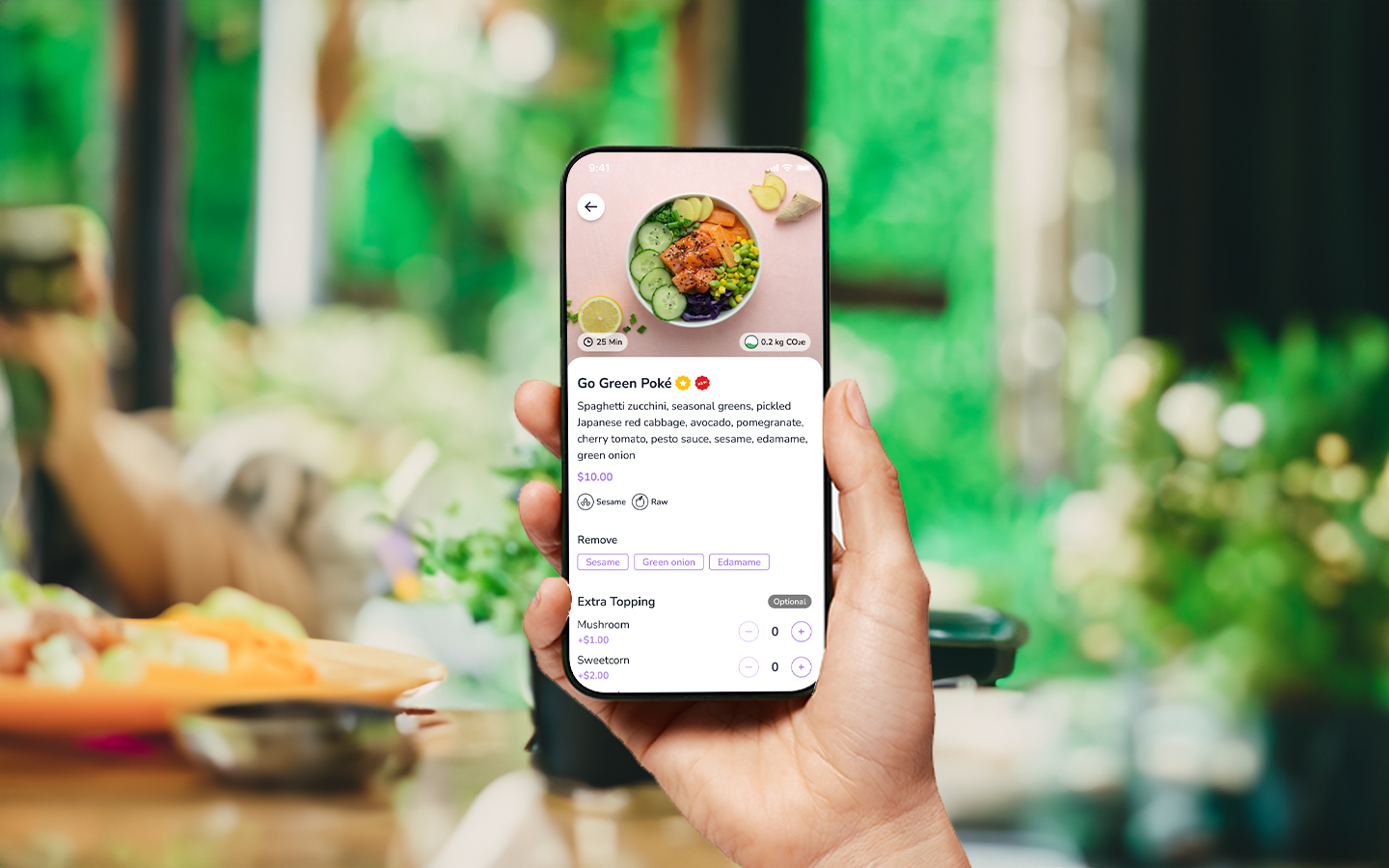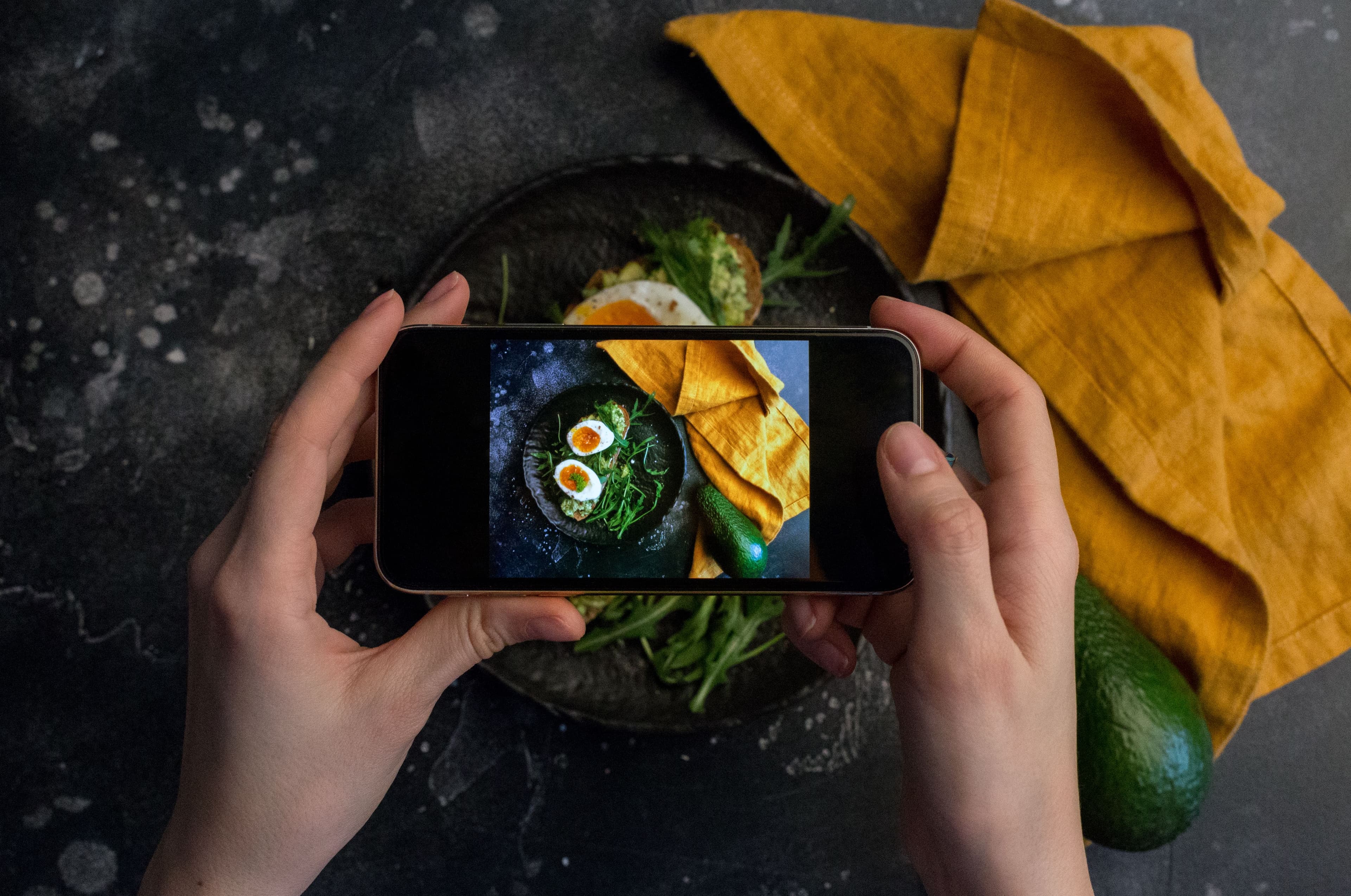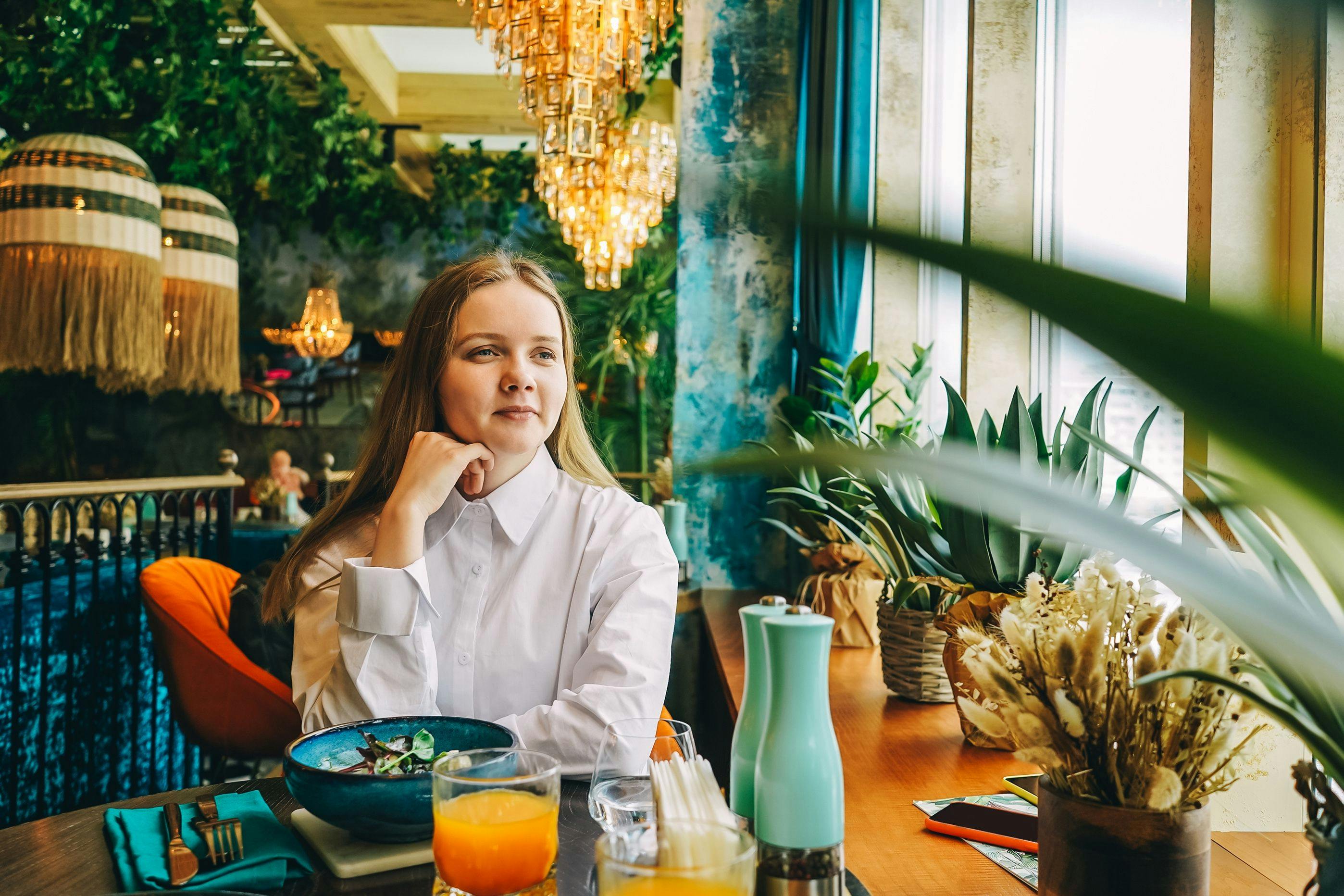In today’s pandemic, most restaurants are looking for ways to help keep up with ever-changing and demanding health regulations and create a risk-minimum dining experience for their customers. A new trend is upgrading paper menus to digital Tablet menus or QR Menus. However, improving the dining experience should always be a priority for any restaurant, as happy customers tend to become regular ones. A great place to start improving that experience other than the food itself is upgrading the menu, which is the crucial element of communicating and impacting decisions about the food. In this article, we will cover various design tips to improve your tablet and digital menu layouts; for more detailed information on menu engineering and how it can help your business, check out our article.
What is a digital tablet menu?
A digital tablet menu is simply a Digital Menu. Customers display the menu items with pictures and relevant information such as calorie and allergen warnings and, at the same time, order online without any service personnel. Tablet menus are an alternative to traditional paper menus. Your customers can glance through all the items and place their orders within minutes without any mixups. It allows to shorten the decision period, improve the ordering process, and streamline payments by enabling customers to pay directly using the tablet menu.
Pros of Implementing a Tablet Menu System
1- Display Enticing Images of Menu Items to Help the Decision-Making
The significant impact of Tablet Menus is, however, in digitalizing the whole dining experience, and with this comes the ability to include images for all the items on your menu. Having enticing photos of menu items can help customers decide what to eat faster. Imagery is a significant aid for decision-making when it comes to food. Just think of all the money poured in by huge fast-food franchises or celebrity chefs to showcase their products on tv either through commercials or cooking shows. This alone should give you an idea about how essential it is to have high-quality images in your tablet menu design.
2- Enable Digital Ordering Straight Through the Menu.
Orders getting mixed up or held up for too long is a common thing within the restaurant industry and, on its own, can be costly in the long run. By allowing your customers to place their orders using the Tablet Menu, you can easily create an error-free and much faster order experience for your customers.
3- Easily Editable
Tablet Menus are digital, and unlike good old printed paper menus, they can be edited within minutes with a few clicks of a mouse. You can quickly adapt your menu to changing menu regulations, temporarily disable unavailable items, and, in all honesty, not showing an item is a lot better than rejecting or trying to guide a customer to a similar or just-as-good dish. Also, you can continually update your branding or the look and feel of your menu without having to spend an extra dime.
Tips for Creating an Attractive Tablet Menu Layout
Make Your Tablet Menu Design User-Friendly
Keep your menu clean and simple; make sure to utilize separators, dropdown categories, or menu filters. If you display too many choices, it can lead to decision fatigue, and customers might end up feeling frustrated and unable to choose amongst many options and might refrain from ordering at all.
Highlight best-selling dishes for your restaurant; you can do this by placing them in a separate section at the top of your menu. This simple section will create social proof for those who are too picky or unable to decide what to eat and save time for sides and dessert.
Consider Adding Photos to Your Menu
When it comes to ordering food, customers would always prioritize the image of a respective dish over a plain description. Descriptions are a great help; however, images are king when deciding what to eat. They create a better understanding of the dish and a sense of familiarity, heightening hunger or desire to eat a specific dish. Also, tablet menus today have nearly perfect display quality, so a menu that lacks photos would be a waste of that piece of hardware.
So, consider adding mouth-watering images of dishes as tablet menus or any type of e-menu. It hardly has any limitations regarding the amount of content you can add, so feel free to add them.
Highlight the Most Profitable Items
Optimize your menu for sales; to do that, you have to look at those items that are easy to prepare and consist of relatively low-priced ingredients. You can label those items on your menu as a daily or weekly item. Another option is to highlight them as 'chef's favorite,’ “Must Try,” or “Best Seller” to catch the customer's eye.
FineDine Tablet menu offers a unique dashboard where all your ordering data, such as menu item performances, revenue contributions, and order frequencies, can be tracked and analyzed. This data can help you optimize your menu items or, even better, tell you what to remove from your menu, further improving your tablet menu design.
Keep the Menu Updated
In the restaurant business, it's common to have experienced a bit of embarrassment in saying no to sold-out dishes. However, with a digital menu, you can work around this problem by instantly customizing your digital Tablet menu by either letting your customers know that certain items are temporarily unavailable with indicators or hiding items until they are available for purchase.
Another best practice is highlighting new items by using intelligent labels in the menu or creating a dedicated section.
Try to Keep the Tablet Menu Design Uncluttered
It is essential to keep your menu layout clear and uncluttered. To do that, you’ll have to divide the restaurant menu into logical sections. Consider using separate sections for starters, sweets, drinks, and pizza/pasta. Utilizing interactive functions such as dropdown sections or a top bar allows customers to scroll through different sections quickly. Also, remember to refrain from using too many visual elements in the background to avoid the menu looking messy and taking away the attention from your dishes. Maintaining the text and graphic balance in a menu is critical to help customers easily find and pick what they want to eat, and reducing the noise helps.
Harness the Power of Words
Sure, imagery is a way to create emotions and a clear understanding of a dish, but don't forget to add precise and enticing descriptions with words that can best capture the taste of a dish. Try adding in words such as buttery, crisp, and savory, as they have the potential to elicit a visceral reaction of hunger and create expectation. But while adding such terms, don't forget that the menu should not be too wordy. The tablet menu layout should ideally match the fun and food-focused tone to avoid customers refraining from reading descriptions altogether.
Design the Menu for All Screen Types
When customizing the digital menu, you have to ensure that the menu's size fits your display. You’ll have to maintain the image and text size accordingly to avoid displaying oversized images and text or unreadable tiny descriptions and images.
Final Verdict
Tablet menu is an online ordering system that enables your restaurant or cafe customers to place orders from the moment they sit down. It helps prevent customers from flagging down staff and reduces table downtime by guiding customers with imagery and detailed descriptions.
You can easily encourage customers to order more by highlighting items with FineDines AI-powered recommendations. You can also track order data to optimize your menu to streamline your operations.
Allow customers to pay directly using the Tablet Menu and prevent order mixups, ultimately improving the overall dining experience and boosting revenues.


